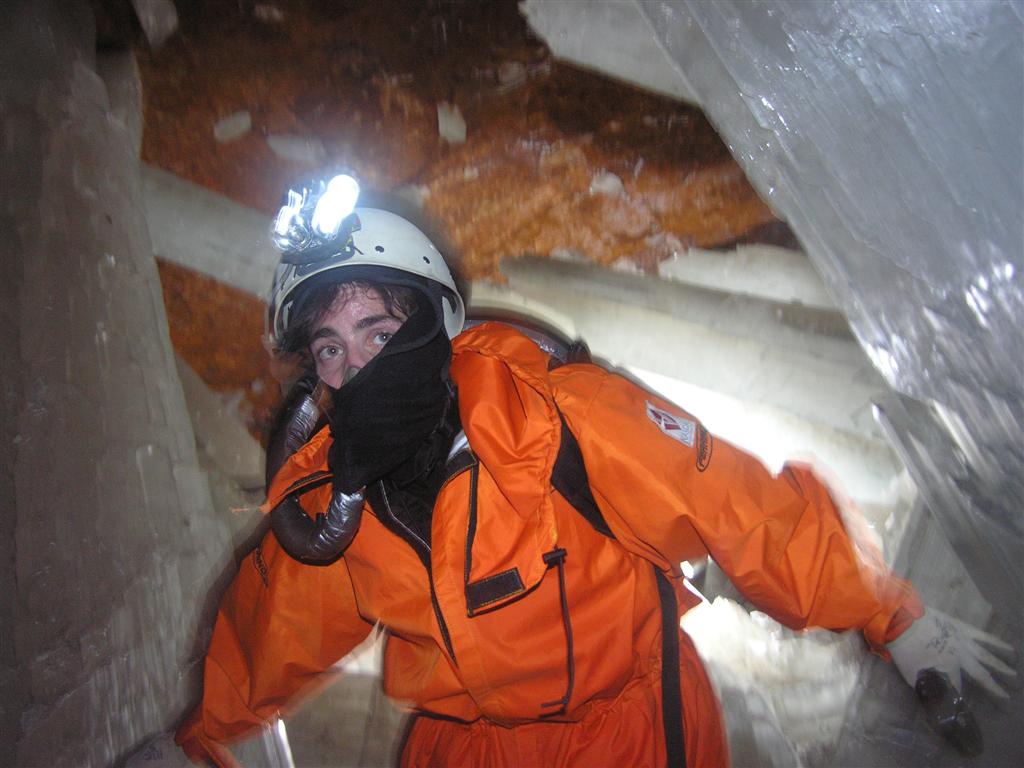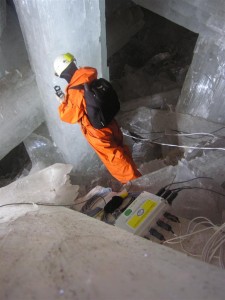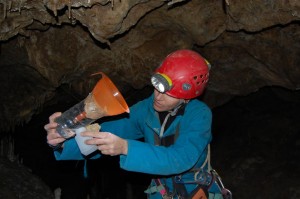Humans have been exploring the Earth’s surface since prehistoric times and the dawn of human evolution, several thousand years ago. With the development of innovative tools, new and ever more inaccessible places have been discovered around the world by groups of individuals driven by curiosity, until humans set their sights on extra-terrestrial goals. At first, people moved to unknown areas in search of important resources such as animals to hunt, fresh water or later on, minerals. Only more recently have humans sought to conquer remote areas of the Earth for other purposes, such as geographic exploration.
Current technologies open up the opportunity to investigate interesting scientific aspects of the Earth, as we seek to understand Nature and its processes in order to preserve the entire habitat. The planet still harbours several areas where new study can be carried out; one of the closer environments where systematic research can take place is that of caves.
Caves are extreme environments with relatively stable conditions that reflect and record the surface climate in deposits, like paleo-climatic archives that can be used to forecast the near future. Moreover, cave environmental parameters – such as air circulation, temperature, the chemical composition of groundwater and CO2 concentrations – allow us to track transient phenomena in the current climate, which is a valuable way of monitoring global change. It’s amazing how cave environments, so delicate and different from the Earth’s surface, can provide such a broad spectrum of scientific information, most of which also concerns space.
Even though expeditions into natural cavities started over a century ago, ‘empty’ mountains still offer new underground passages and rivers to discover, a 3-dimensional network of fractures and conduits, as unlimited as the Universe itself. To be the first person to leave his or her footprints in a new place is a very exciting experience that is hard to imagine for people who have never tried it, but it is probably akin to that of being the first astronaut on the Moon.
Once, I too felt like a real astronaut. It was in Naica, Mexico, in a mine in the middle of the Chihuahua desert. I arrived there via a long straight road running through the desert: a strip of black glowing asphalt emanating a dense and hot steam that reflected the sky in a vibrant mirage. That tremendous heat was just the prelude to my trip, an outpost before hell. The road to my final destination was through a skyless corridor that zigzagged inside the mountain, following the yellow trails of reflective stars until we were –290 m below the level of the plain, led there by an expert in this cosmodrome. In front of a heavy door, I put on a special cave suit and snorkel, then I shuffled inside the enchanted space of the Crystal Cave, in search of hidden treasure.
Speleology, with its multidisciplinary approach, brings together knowledge and observation, the main ‘ingredient’ of geographic studies in extra-terrestrial environments. That’s why caves are one of the best places for carrying out the scientific component of astronaut training. Every year, cavers, as ‘speleonauts’, find new cave entrances, explore and document more kilometres of karst conduits, monitor different parameters, and finally, describe and map the underground world. Most space adventurers are driven by the same internal challenge: curiosity and the desire for knowledge.
Laura Sanna
Humans have been exploring the Earth’s surface since prehistoric times and the dawn of human evolution, several thousand years ago. With the development of innovative tools, new and ever more inaccessible places have been discovered around the world by groups of individuals driven by curiosity, until humans set their sights on extra-terrestrial goals. At first, people moved to unknown areas in search of important resources such as animals to hunt, fresh water or later on, minerals. Only more recently have humans sought to conquer remote areas of the Earth for other purposes, such as geographic exploration.
Current technologies open up the opportunity to investigate interesting scientific aspects of the Earth, as we seek to understand Nature and its processes in order to preserve the entire habitat. The planet still harbours several areas where new study can be carried out; one of the closer environments where systematic research can take place is that of caves.
Caves are extreme environments with relatively stable conditions that reflect and record the surface climate in deposits, like paleo-climatic archives that can be used to forecast the near future. Moreover, cave environmental parameters – such as air circulation, temperature, the chemical composition of groundwater and CO2 concentrations – allow us to track transient phenomena in the current climate, which is a valuable way of monitoring global change. It’s amazing how cave environments, so delicate and different from the Earth’s surface, can provide such a broad spectrum of scientific information, most of which also concerns space.
Even though expeditions into natural cavities started over a century ago, ‘empty’ mountains still offer new underground passages and rivers to discover, a 3-dimensional network of fractures and conduits, as unlimited as the Universe itself. To be the first person to leave his or her footprints in a new place is a very exciting experience that is hard to imagine for people who have never tried it, but it is probably akin to that of being the first astronaut on the Moon.
Once, I too felt like a real astronaut. It was in Naica, Mexico, in a mine in the middle of the Chihuahua desert. I arrived there via a long straight road running through the desert: a strip of black glowing asphalt emanating a dense and hot steam that reflected the sky in a vibrant mirage. That tremendous heat was just the prelude to my trip, an outpost before hell. The road to my final destination was through a skyless corridor that zigzagged inside the mountain, following the yellow trails of reflective stars until we were –290 m below the level of the plain, led there by an expert in this cosmodrome. In front of a heavy door, I put on a special cave suit and snorkel, then I shuffled inside the enchanted space of the Crystal Cave, in search of hidden treasure.
Speleology, with its multidisciplinary approach, brings together knowledge and observation, the main ‘ingredient’ of geographic studies in extra-terrestrial environments. That’s why caves are one of the best places for carrying out the scientific component of astronaut training. Every year, cavers, as ‘speleonauts’, find new cave entrances, explore and document more kilometres of karst conduits, monitor different parameters, and finally, describe and map the underground world. Most space adventurers are driven by the same internal challenge: curiosity and the desire for knowledge.
Laura Sanna
Humans have been exploring the Earth’s surface since prehistoric times and the dawn of human evolution, several thousand years ago. With the development of innovative tools, new and ever more inaccessible places have been discovered around the world by groups of individuals driven by curiosity, until humans set their sights on extra-terrestrial goals. At first, people moved to unknown areas in search of important resources such as animals to hunt, fresh water or later on, minerals. Only more recently have humans sought to conquer remote areas of the Earth for other purposes, such as geographic exploration.
Current technologies open up the opportunity to investigate interesting scientific aspects of the Earth, as we seek to understand Nature and its processes in order to preserve the entire habitat. The planet still harbours several areas where new study can be carried out; one of the closer environments where systematic research can take place is that of caves.
Caves are extreme environments with relatively stable conditions that reflect and record the surface climate in deposits, like paleo-climatic archives that can be used to forecast the near future. Moreover, cave environmental parameters – such as air circulation, temperature, the chemical composition of groundwater and CO2 concentrations – allow us to track transient phenomena in the current climate, which is a valuable way of monitoring global change. It’s amazing how cave environments, so delicate and different from the Earth’s surface, can provide such a broad spectrum of scientific information, most of which also concerns space.
Even though expeditions into natural cavities started over a century ago, ‘empty’ mountains still offer new underground passages and rivers to discover, a 3-dimensional network of fractures and conduits, as unlimited as the Universe itself. To be the first person to leave his or her footprints in a new place is a very exciting experience that is hard to imagine for people who have never tried it, but it is probably akin to that of being the first astronaut on the Moon.
Once, I too felt like a real astronaut. It was in Naica, Mexico, in a mine in the middle of the Chihuahua desert. I arrived there via a long straight road running through the desert: a strip of black glowing asphalt emanating a dense and hot steam that reflected the sky in a vibrant mirage. That tremendous heat was just the prelude to my trip, an outpost before hell. The road to my final destination was through a skyless corridor that zigzagged inside the mountain, following the yellow trails of reflective stars until we were –290 m below the level of the plain, led there by an expert in this cosmodrome. In front of a heavy door, I put on a special cave suit and snorkel, then I shuffled inside the enchanted space of the Crystal Cave, in search of hidden treasure.
Speleology, with its multidisciplinary approach, brings together knowledge and observation, the main ‘ingredient’ of geographic studies in extra-terrestrial environments. That’s why caves are one of the best places for carrying out the scientific component of astronaut training. Every year, cavers, as ‘speleonauts’, find new cave entrances, explore and document more kilometres of karst conduits, monitor different parameters, and finally, describe and map the underground world. Most space adventurers are driven by the same internal challenge: curiosity and the desire for knowledge.
Laura Sanna





Discussion: no comments